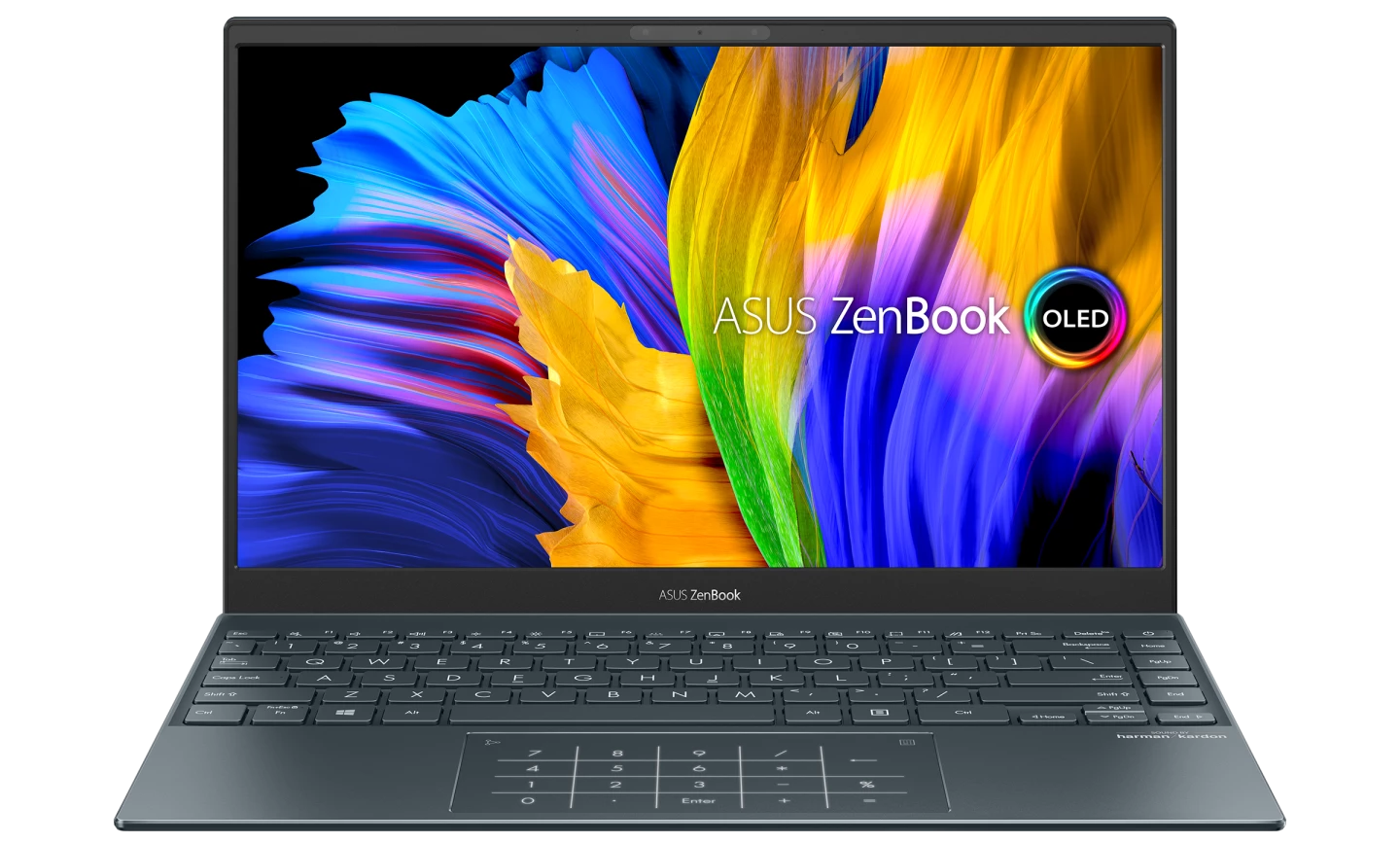With many folks working from home thanks to the global pandemic, demand for laptops is on the rise. Asus has responded with the launch of a lightweight portable powerhouse named the ZenBook 13 OLED.
The UX325, to use it model name, tips the scales at 2.45 lb (1.11 kg), and comes in at 13.9 mm (0.55 in) thin. Opening the clamshell up presents a 13.3-inch OLED display panel at Full HD resolution, with an 88 percent screen-to-body ratio thanks to 2.9-mm bezels.
Other notable display specs include 400 nits of brightness, Pantone-validated colors and support for 100 percent of the DCI-P3 color gamut, and eye-friendly operation thanks to TÜV Rheinland low blue light certification. Asus also reports an "ultra-fast response time," though no figures are given.
Inside, the processing brains come in 11th Generation Core i7 or i5 options with Iris X graphics onboard, supported by up to 16 GB of RAM and 512 GB of SSD storage.

Wireless connectivity shapes up as Bluetooth 5.0 and Wi-Fi 6, and there's healthy spread of I/O ports too: two Thunderbolt 4 USB-C (with power delivery), one HDMI 2.0 and one USB 3.2 Type A. A microSD slot can also be found on the unit's right edge.
Elsewhere, the edge-to-edge chiclet keyboard makes for more comfortable typing, with a hinge raising the laptop at the back to help further in that regard. The touchpad doubles as a numeric keypad when needed, there's a HD infrared webcam with Windows Hello support, though no privacy shutter, and a noise-canceling microphone for video chats or VOIP calls. And the audio system has been tuned by Harman Kardon.
Asus says that this is a portable workstation you can rely on, having been dropped, chilled, shaken and transported up high to MIL-STD-810G standards. Meanwhile the 67-Wh lithium polymer battery promises up to 13 hours of per charge usage (though manufacturers can be a little optimistic here).
The ZenBook 13 OLED will go on sale shortly, pricing starts at US$899.99.
Product page: UX325







